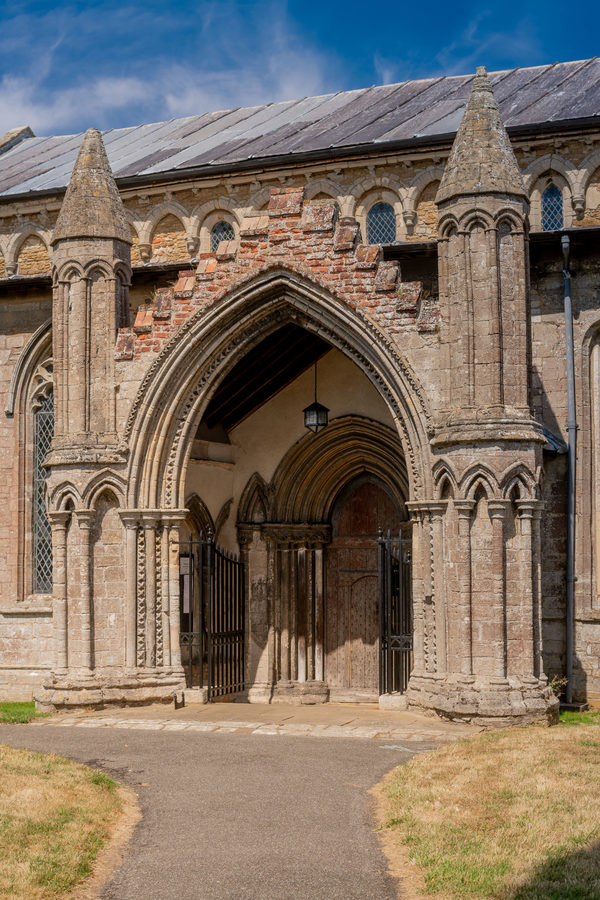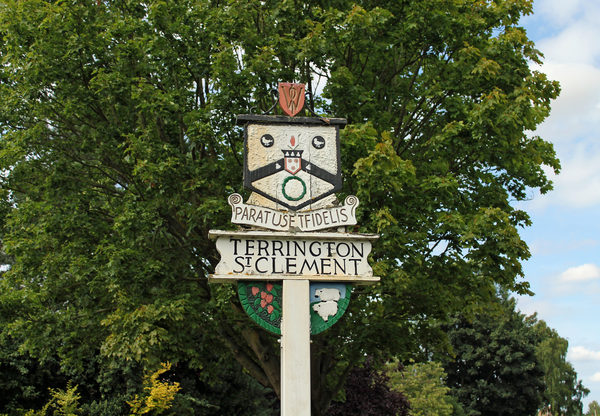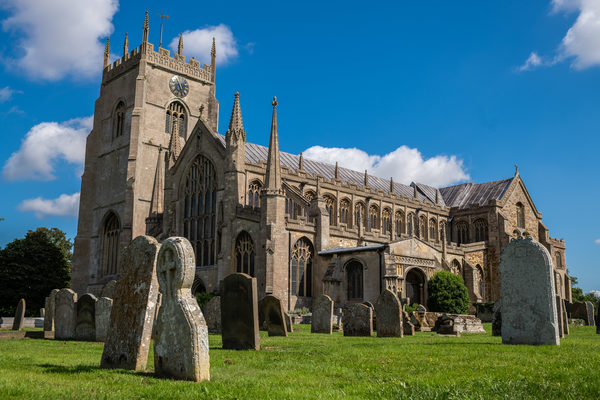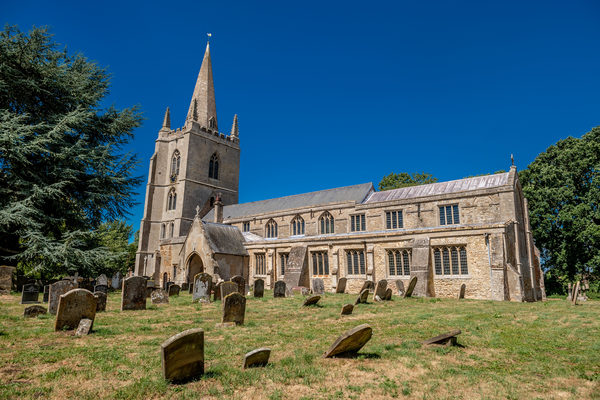A church has been here at least since 1021 when the advowson (the right to make a living from the church) was given to the Abbey of Ely. Of that church, nothing above ground survives. The present tower was built in about 1300, but a sea flood in 1337 destroyed everything else of the existing church.
Re-building might have started almost at once, but in 1348 the Black Death intervened. Nonetheless, the local landowners grew immensely rich thanks to the suitability of the land for rearing sheep, the proximity to ports such as Kings Lynn and close access to the market of East Anglia, at that time the most densely populated region of the UK. They showed their appreciation to The Lord by building a mighty church and embellishing it opulently.
At first a smaller church was built around 1360 - the area which is now the chancel was added on to the east end of that church around 1425. The total was some fifty metres in length and stretched right up to the boundary of the consecrated land. Church processions were unable to pass by the east end of the church, so a passageway was created under the High Altar (known locally as the Bolt Hole) an extraordinary feature for a church of any age.
The architectural style of the earlier section, which is now the nave, can be said to be Transitional Perpendicular, while the later section, which is now the chancel, is pure Perpendicular. The fact that the church was developed in only a few stages - starting with the old tower, then adding what is now the nave and finally the chancel - means that the completed effect is perfectly symmetrical, which is most pleasing to the eye and rather unusual. Many old churches have been added to in many stages and have lost their symmetry in the process.
The 'new' chancel was probably added at the expense of the Rochford family, whose shield is over the southern entrance to the Bolt Hole, and some of whom are buried in the Lady Chapel, where the matrices of their brasses (but not the brasses themselves) can be seen. They were constables of Wisbech Castle.
The south porch is the latest addition to the building - probably about 1450. Some restoration work took place in the early twentieth century. The advowson passed in 1109 to the Bishop of Ely, and was acquired for the Crown by Elizabeth 1 in 1561.
Going through into the north aisle of the nave, to the right is the font. A seven sacrament font, defaced during the reformation, it was erected in 1532 during the incumbency of the Rector, Revd. John Whetholme. The intricately carved Elizabethan font cover was added in about 1580. Inside, on the ceiling of the font cover are gilded rays, symbolising the Holy Spirit.
The main stained glass in the church is in the east window. It was made in memory of Revd. Philip Salisbury Bagge, rector from 1853 and contains many local and regional references. The top left window depicts St. Andrew perhaps because the vicar of the church of St. Andrew in the neighbouring village had a stall here. The next window shows St. Luke because Philip Salisbury Bagge was born and died on St. Luke's Day, 18th October 1817 and 1890.
In the south east corner of the nave is St. James Chapel. Its wooden screen (called a parclose, separating it from the main body of the church) dates from the fifteenth century and contains a spiked wrought iron gate. There is a statue of St. James, half way up the column at the corner of the chapel.
The memorials in the chapel are for the Cony family, who took over from the Butler family as occupants of Dovecote. Their coat of arms contains three rabbits, as `cony' is the Old English word for rabbit. Also in this chapel is a large aumbry, enclosed by a door.
On the ceiling are several raised carved ornaments, called bosses, considered to be some of the finest medieval examples in the county. The two main ones are the Assumption of the Blessed Virgin and the Last Judgement, while others represent God's head and hand in blessing, the Dove of the Holy Spirit and the Pelican. The pelican is the emblem of the Holy Communion because it would peck itself to draw blood with which to feed its young.








